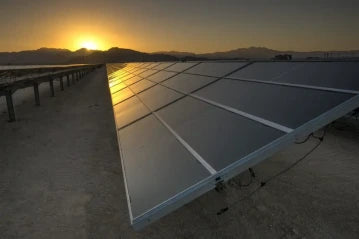
Solar panels have become an increasingly popular source of renewable energy for homeowners and businesses alike. As the demand for solar power continues to rise, so does the interest in understanding the most efficient methods of connecting solar panels. One common question that arises is whether solar panels charge faster when connected in series or parallel. In this article, we will explore the advantages and disadvantages of both series and parallel connections and shed light on which configuration is better suited for maximizing solar panel efficiency.
Understanding Series and Parallel Connections
Before delving into the comparison, it's essential to understand the basics of series and parallel connections. When solar panels are connected in series, the positive terminal of one panel is connected to the negative terminal of the next panel, resulting in a cumulative increase in voltage while maintaining the same current. In contrast, parallel connections involve connecting the positive terminals together and the negative terminals together, resulting in an increased current while maintaining the same voltage.
Advantages of Connecting Solar Panels in Series
1. Increased Voltage: Connecting solar panels in series allows for a cumulative increase in voltage. Higher voltages can be beneficial when charging batteries or for long-distance power transmission. Increased voltage also reduces resistive losses in the wiring, leading to more efficient power delivery.
2. Efficient Use of Inverters: Many solar power systems require inverters to convert the DC power generated by the panels into usable AC power. Connecting panels in series enables the use of a single inverter, reducing the overall system cost and improving efficiency.
3. Simplified Wiring: Series connections simplify the wiring process as fewer wires are required to connect the panels to the system. This reduces material costs and installation time, making series connections more convenient for large-scale solar installations.
Does Connecting Solar Panels in Parallel Increase Wattage?
While series connections increase voltage, connecting solar panels in parallel increases the overall current or wattage output of the system. When solar panels are connected in parallel, the current generated by each panel adds up, resulting in a higher total current. This configuration is useful when the system requires higher current to meet the power demands of certain appliances or equipment.
Disadvantages of Solar Panels in Parallel
1. Increased Wiring Complexity: Parallel connections require multiple wires to connect each solar panel to the system. This increases the complexity of the wiring, especially in larger installations, which can lead to higher material costs and more time-consuming installations.
2. Mismatched Panels: When connecting solar panels in parallel, it's crucial to ensure that all panels have the same voltage and current ratings. Mismatched panels can lead to imbalances in the system, resulting in reduced overall efficiency.
3. Reduced System Efficiency: In parallel connections, the overall system efficiency can be affected by shading or malfunctions in a single panel. If one panel is shaded or experiences a fault, it can impact the performance of the entire system, reducing the overall energy output.
Conclusion
When deciding whether to connect solar panels in series or parallel, it's essential to consider the specific requirements and objectives of the solar power system. Connecting solar panels in series increases voltage and is advantageous for applications such as battery charging and long-distance power transmission. On the other hand, parallel connections increase current output and are beneficial when the system requires higher wattage or to accommodate power-hungry appliances.
Ultimately, the choice between series and parallel connections depends on factors such as system design, energy demands, cost considerations, and the intended use of the solar power system. Consulting with a qualified solar professional can help determine the optimal configuration for maximizing efficiency and achieving the desired energy output.
Harnessing the power of solar panels offers a sustainable and environmentally friendly solution to meet our energy needs. By understanding the advantages and disadvantages of connecting solar panels in series or parallel, we can make informed decisions to optimize solar panel efficiency and ensure the most effective utilization of this clean energy source.


0 comments